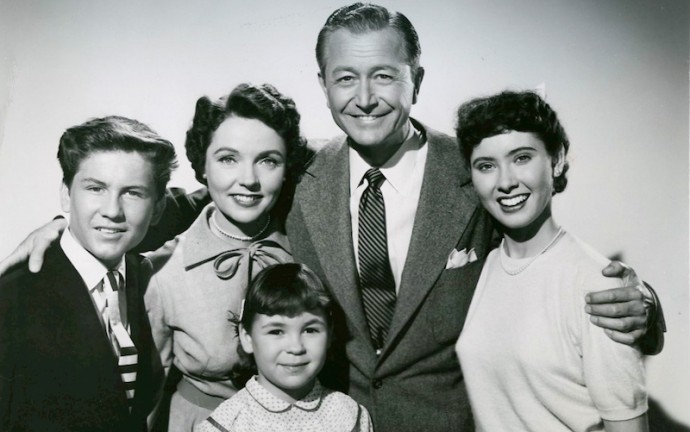The Presbyterian Church (U.S.A) made headlines recently after its local presbyteries voted to, as the New York Times put it, approve same-sex marriage. This new definition will go into effect in June.
Given the tensions this issue has caused, both within the PCUSA and among many other denominations, it shouldn’t be very surprising that the phrasing in the PCUSA’s Book of Order was changed from “between a man and a woman” to “between two people, traditionally a man and a woman.”
“Traditional marriage” is common in the rhetoric of those opposed to same-sex marriage, and it’s a phrase that’s likely to bring to mind images of a kind of Father Knows Best arrangement. It isn’t difficult to understand why the PCUSA might adopt this rhetoric to affirm the position of its fairly sizable number of dissenting presbyteries, but is it really accurate?
The word “tradition” tends to connote a sense of fixity and stability, an impression that “this is the way marriage always was,” leaving “gay marriage” to represent a sharp and dramatic historical rupture. Yet this way of thinking is only possible because of a certain historical amnesia.
In fact, it would be far more precise to characterize the historical “tradition” of Christian marriage as one of development and change. Many of these developments, furthermore, continue to shape a number of the assumptions American Christians have about the nature of marriage. Consider the following examples of historical changes in Christian marriage and whether we can honestly still call today’s version “traditional.”
1) Were individuals always required to be conventionally alive?
For the majority of the past two thousand years, Christian women could marry Jesus, who (in most Christian theologies) cannot be said to be a regular human, since he is also fully divine, nor be considered alive in any standard sense of the word.
During the Middle Ages, strikingly, these unions to Jesus were legally binding marriages, as Thomas Head (1990) and Sarah McNamer (2010) have shown. Like Catholic nuns today, medieval women married Jesus in wedding ceremonies, replete with rings and gowns. Indeed, these marriages were functionally on par with marriages between two humans. And things could get messy when human-divine marriage and human-human marriage overlapped, as I show in my essay in Queer Christianities (NYU, 2014).
This means that, for hundreds of years, medieval Christian women could and did marry “traditionally” in a way that Presbyterian women today cannot. Among the reasons Presbyterian women do not marry Jesus, nor even think of it as possibility, is because, as with most Protestants, they do not have a system of monastic vows. The Protestant Reformers famously attacked the monastic system during the sixteenth century. No monastic vows means no nuns. Without nuns, it’s hard to conceive of women marrying Christ.
2) What counts as incest?
The PCUSA belongs to the larger Reformed tradition, which, alongside Lutheranism and the Radical Reformation, revolutionized Christian ideas of kinship nearly to the point of being unrecognizable during the Protestant Reformation. This matters greatly since kinship systems determine what counts as incest and, thus, who is off-limits to marry.
The medieval Catholic Church embraced a complex and very expansive system of prohibited family members. The Church initially restricted legitimate marriage to people beyond the 7th degree of kinship, though it was later reduced, at the 4th Lateran Council in 1215 C.E., to the 4th degree.
The Reformers, whose ideas helped shape marriage laws and sensibilities across the U.S to this day, broke with tradition and pioneered a new system. In The Babylonian Captivity of the Church (1520), for instance, Martin Luther wrote,
“According to Leviticus 18, there are only twelve persons a man is prohibited from marrying: his mother, stepmother, full sister, half-sister by either parent, granddaughter, father’s or mother’s sister, daughter-in-law, brother’s wife, wife’s sister, stepdaughter, and his uncle’s wife. Here only first degree of affinity and second degree of consanguinity are forbidden . . .”
John Calvin added first cousins to this list in 1546, which makes it very similar to today’s marriage laws. At the time, of course, it would have struck many as a significant break with tradition.
3) Were widows and widowers permitted to remarry?
Here, I don’t mean to reference the twentieth-century debates around divorce or even their sixteenth-century predecessors, as interesting and relevant as both of those debates are. Instead I want to draw attention to an earlier Christian debate about whether or not someone could marry again after the death of his or her first spouse.
In the second and third centuries, many Christians rejected the validity of marrying more than once. The most famous—and extreme—example of this position was Tertullian. In his early third-century treatise Monogamy, Tertullian insists that it is unchristian to remarry after the death of a spouse because Christians, in a sense, survive death and thus their marriages do not really end. Those who do remarry become polygamous. By remarrying, the living spouse—figured by Tertullian as a widow—now has “one husband in the flesh and another in the spirit… [which is] adultery.”
The Tertullians of the world would soon lose out and remarriage of this kind would become accepted as licit, though not laudable. Christians throughout the Middle Ages and the Reformation continued to look upon second marriages as morally suspect, often referring to them as bigamy. Yet I’m not aware of this “tradition” being morally questionable for contemporary Christians, including Presbyterians.
Other issues, such as race, miscegenation laws, and divorce, likewise show how different current ideas about “traditional marriage” are from what marriage has actually been. These various changes to Christian marriage, moreover, help us see what assumptions, often unacknowledged, Christians bring to their conceptions of marriage.
Notice that Presbyterians, like Episcopalians, most evangelicals, and nearly every American Protestant (and unlike so many Christians in the past), can marry after the death of a spouse, can marry a third or fourth cousin without it being considered incestuous, and cannot marry Christ. From a broad historical perspective, therefore, the PCUSA’s new position on marriage is less a revolt from tradition than a minor but still significant adjustment to the current marital status quo.





